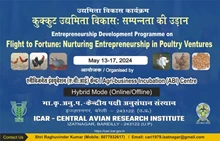
Hydroponic farming is the technique of growing plants in which water is substituted for soil as a growing medium. There are several benefits of hydroponics systems. For instance, hydroponics requires far less space to grow plants than plants grown in soil. Water and nutrients are delivered to the roots directly and do not have to spread out to search for nutrients and moisture.
This farming technique also helps conserve water even though it uses water as a growing medium instead of soil. It is also not dependent on weather conditions. Therefore, plants can be grown throughout the year. There is no need for tilling or weeding of the soil, along with less requirement for other labour-intensive farm jobs such as applying herbicide and insecticide to the soil. All in all, hydroponics farming techniques are the future of sustainable farming practices globally. But how does a farmer decide which hydroponics system is best suited for them? Let us take a look-
Things to keep in mind before choosing a hydroponics system
Budget
Determine your budget as hydroponics systems come in a wide range of prices and you can narrow down your options.
Space
Consider the space you can set aside and the number of plants you want to grow for the hydroponics infrastructure. Hydroponics systems come in different sizes and configurations.
Experience
When choosing a hydroponics system you have to consider your experience in growing plants as well. Hydroponics systems typically require a lot of experience and expert knowledge than traditional gardening. You need to have an understanding of the pH levels, growing solutions, and plant health.
Types of hydroponics systems
Basic wick
Basic wick is considered the simplest form of all the types of hydroponics systems. This is a great system to install on a smaller scale or at home. It also doesn’t require a lot of experience and is low on cost. It involves growing plants in a container that is placed above a tray that holds water and nutrient solution. However, there are several drawbacks to this hydroponics system, such as not being able to support large plants as it doesn’t deliver a lot of water and nutrients. The best plants to grow in this system are thyme, basil, chicory, rosemary, oregano, and lettuce.
Deep water culture
Deep water culture or DWC is another basic hydroponics system. It consists of a reservoir filled with water and nutrient solution. The plants are suspended over this reservoir using a net pot so that the roots are submerged in the reservoir and have constant access to water and nutrients. This hydroponics system is inexpensive and low on maintenance. It has a recirculating process that leads to less wastage and greater cost savings. However, this hydroponics system doesn’t work for larger plants and can cause plant roots to suffocate when not properly managed. The best plants to grow in this system are lettuce, basil, okra, kale, and chard.
Ebb and flow hydroponics system
The ebb and flow hydroponics system are the best system for a home gardener. In this type of hydroponics system, you position the plants in a spacious growing bed that is packed with a growing medium like perlite or rockwool. This system provides excellent aeration and reduces the risk of stagnation of nutrient solution. It is ideal for most kinds of crops. However, the setup is a little complex as it is dependent on too many components. The best plants to grow in this system are tomatoes, beans, peas, cucumbers, spinach, beets, and carrots.
Nutrient film technique- The nutrient film technique hydroponics system is a compact and self-contained system. It doesn’t require a growing medium and the roots just grow in the nutrient-rich water. This system uses very little water and doesn’t require growing medium which means less cost and maintenance. The best plants for growing in this system are cucumber, herbs, kale, edible flowers, spinach, and peppers.











